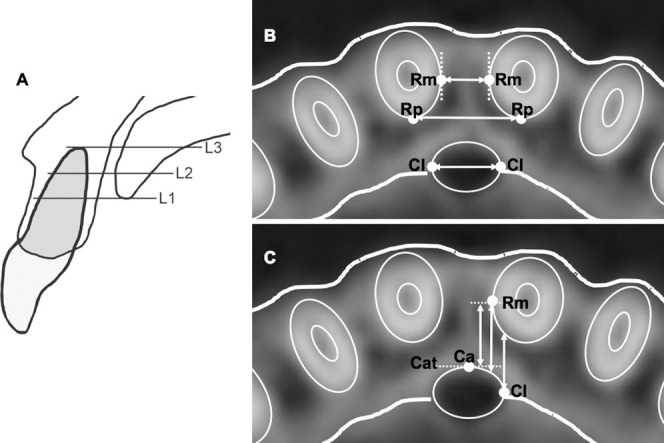Figure 2.

Landmarks and linear measurements. (A) Three vertical levels of the incisive canal: palatal opening level (L1), midlevel (L2), and root apex level (L3). (B) Landmarks for transverse measurements: Rm indicates the most medial point of the maxillary central incisor roots; Rp, the most posterior point of the maxillary central incisor roots; Cl, the most lateral point of the incisive canal; Rm-Rm, interroot distance; Rp-Rp, posterior interroot distance; Cl-Cl, canal width. (C) Landmarks for anteroposterior measurements: Ca indicates the most anterior point of the incisive canal; Cat, the tangent line through Ca; Rm-Cat, the distance from Rm to Cat; Rm-Canal, the distance from Rm to the anterior border of the incisive canal; Cl-Root, the distance from Cl to the posterior border of the maxillary central incisor root.
